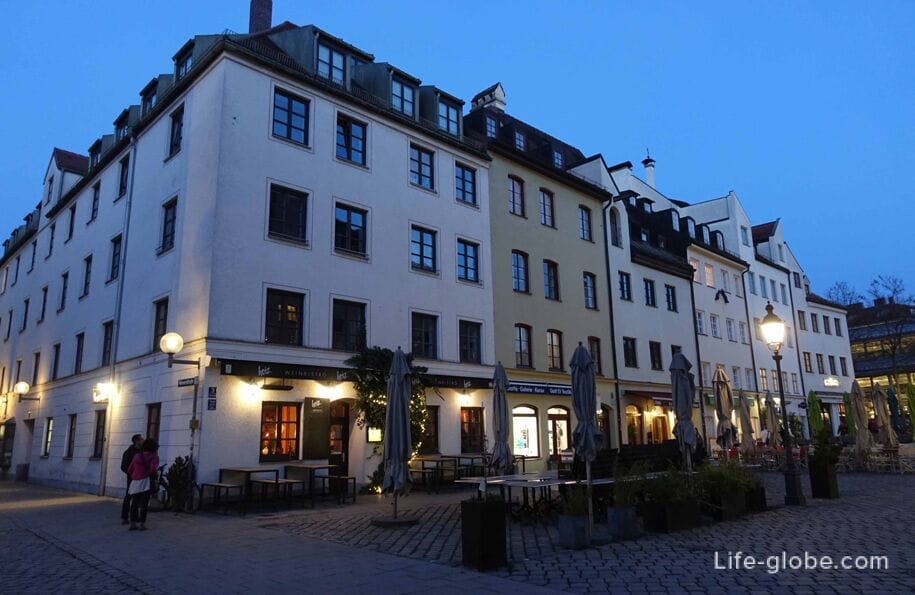
Sebastian Square (Sebastiansplatz) is one of the public squares in Munich.
The area where the square is located was developed in the 12th century, within the second city wall, built near this place in 1478-1499.
Building on the square, essentially arose in the 15-16 centuries, the so - called soap boiler, because at that time, the ISAR (river in Munich) once flowed to the East of the city wall. They were then lovingly restored.
Today, Sebastian Square is located in the south-eastern part of the historic old town of Munich. It is a pedestrian zone and is more like a small street. The length of the square is less than 100 meters. It stretches from west to east, from St. James' Square (Sankt-Jakobs-Platz) and to the Prelat-Zistl-Straße (Prälat-Zistl-Straße).
North side of the square is characterised by 3-and 4-storey historic buildings with mansard roofs, former townhouses (the structure in neo-Renaissance style), some of which have survived to the present day and mostly date from 1761-1890 years. It is the oldest complete row of houses in Munich. Some of the houses are architectural monuments.

In the southern part of the square is a five-story apartment house, built in the late 19th century, and which is a sloping corner building with mansard hipped roof and a decorative facade. The building is also a monument of architecture.
The rest of the buildings around the square were built in our days.
The square is lined with granite stones. The houses, including cafes and restaurants with tables under the open sky.
